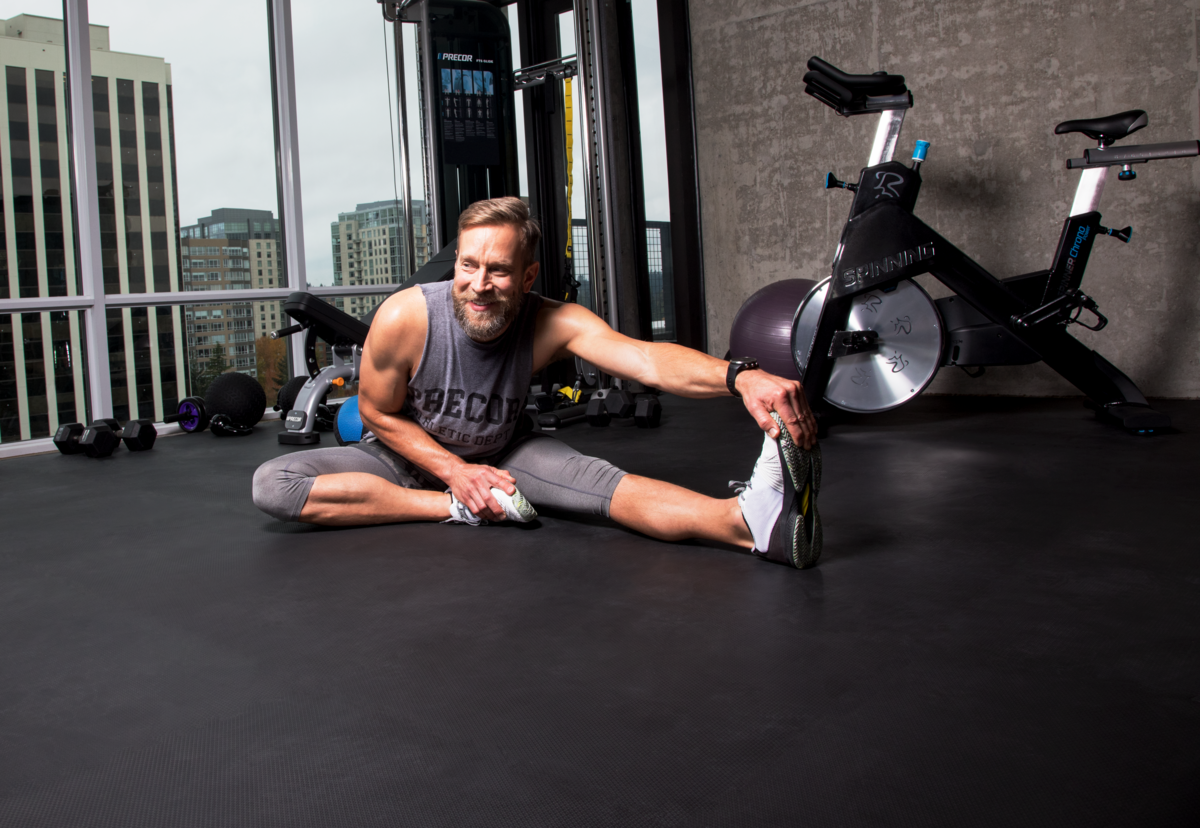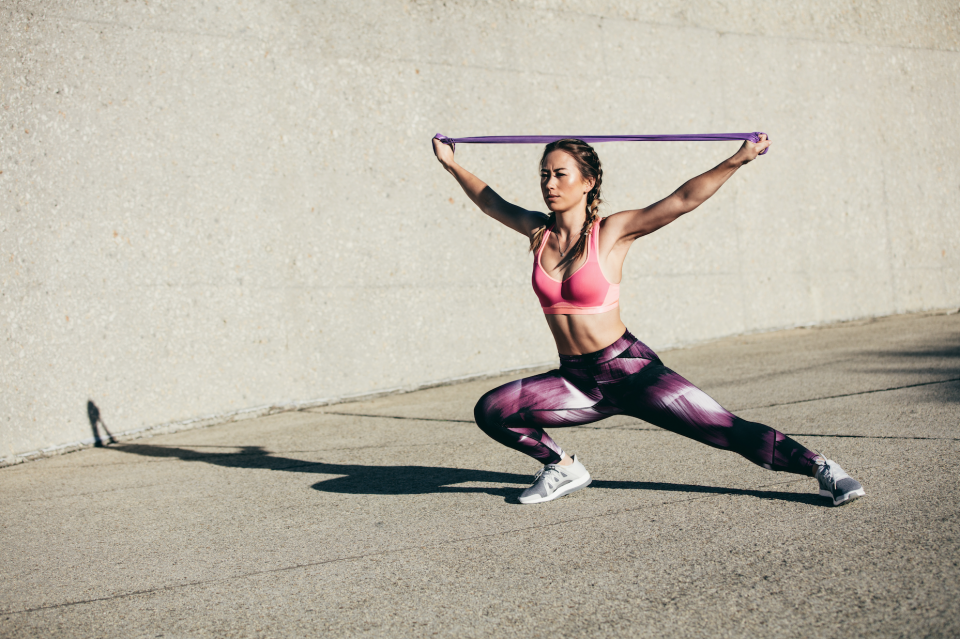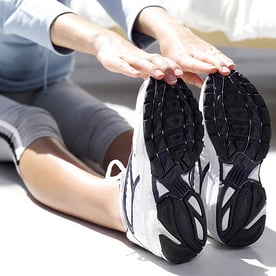
What's the Deal With Stretching?
The health and fitness space can be very confusing at times.
Carbs are good one year, and bad the next.
Keto is the best diet one month, and then a new one comes along.
The area of confusion we will be touching today is about stretching. Every few years, stretching faces controversy from all fields such as trainers, physical therapists, and performance coaches.
Not to worry. The hope is that at the end of this article you’re able to walk away with a sense of peace knowing if and when it is appropriate to stretch. But first, let’s talk about what stretching is and why people do it.
WHAT IS STRETCHING?

Stretching is a form of movement where a muscle is deliberately stretched in short or long bouts. There are different types of stretching, such as static, ballistic, and dynamic stretching. The importance of stretching can be broken down by the benefits of each type.
Static stretching is the most common form of stretching, where the stretch of a muscle is held for a longer period of time, such as 10-30 seconds. Think of some of the most common forms of stretches we all likely did growing up, such as the butterfly stretch, and reaching forward as we’re seated on the floor trying to touch our toes.
Dynamic stretching is the second most common form of stretching. Dynamic stretching includes stretching the muscle through a range of motion with control, without holding a specific point of the stretch. Think about the typical dynamic stretches like lunge and twist, or walking while pulling your knee to your chest.
Ballistic stretches are not talked about often. Ballistic stretching is a form of stretching that uses force to take a muscle past its normal range of motion. Think of reaching down to touch your toes and “bouncing” to push the muscle past its normal range of motion.
Each form of stretching has its place (though I don’t feel you need to perform ballistic stretching, so we won’t be discussing that today).
WHY STRETCH?
Though there is some controversy about the benefits of stretching, it is most often used to increase flexibility and range of motion. Other people use stretching to do things such as reduce DOMS (delayed onset muscle soreness), improve performance, and prevent injury.
The thing is though, most of those benefits don’t actually come from stretching, and stretching has been made out to be a savior, when in fact new research is showing it may not be.
There is no doubt that static stretching does improve flexibility. But believe it or not, resistance training can do that, too. Other than increased flexibility, there really isn’t much else that static stretching can do for you. I know, unpopular opinion. But it does seem that the more research that comes out, the more we’re finding that stretching isn’t doing all it has been promised to do.
Here is a really great article to check out when you have some reading time.
https://www.painscience.com/articles/stretching.php
Though static stretching seems to be very overhyped, it may help you get into a parasympathetic, rest and digest state quicker. Which is why some may do static stretching post workout. But that certainly does not mean it’s necessary. Your body will still get into that rest and digest state.
Other forms of stretching may have their place, such as dynamic stretching.
WHEN SHOULD YOU STRETCH?

The reason static stretching is not recommended pre workout is because it has been shown to decrease performance and increase injury risk. We don’t want you having poo poo performance during your workout or getting hurt.
Thankfully, there are other things you can do to improve your workouts.
Dynamic stretching can be done before a workout, with the intention to move the muscles and joint through their full range of motion with control. Another form of movement that can greatly benefit your workout is mobility work.
Mobility has taken rise in popularity lately, and for a good reason. Think of mobility as gaining increased stability and control through a greater range of motion. Applying mobility movements that are specific to your workout can help you improve your performance. The best way to do this is to focus on specificity.
Your warm-up routine should be specific to the workout you have in front of you. For example, if you have squats in your workout, it would be beneficial to focus on mobility movements that help resemble your squat and will therefore help you squat well.
For example, going into a slow, deep, controlled goblet squat as a warm up movement can help you gain greater stability and control over your squat which will help you with your barbell squat in your workout.
So, doing some form of dynamic “stretching” or mobility work pre workout can be beneficial.
But when else should you stretch?
Truthfully, outside of mobility work and dynamic stretching, there isn’t much need to regularly stretch unless you have a distinct goal to increase flexibility, in which both static stretching and resistance training can help you do so. You can perform static stretching whenever you’d like, though I don’t recommend performing it pre-workout.
Your key takeaway here is that other than improving your workout, you don’t need to worry about stretching. Use dynamic and mobility movements to improve your joints’ range of motion and muscles’ connectivity to enhance your workout, focusing on making your warm up as specific to your workout as possible. Overall, the importance of stretching can be debated in terms of general knowledge, but to improve athletic performance it can definitely make an impact.
ABOUT THE AUTHOR
Adam is a fitness professional, baseball fan, and cookie fanatic based in Fort Worth, TX. After hanging up the cleats, he found a strong interest in the human body and how it performs. Since then, Adam has been transforming lives through fitness in a fun and encouraging atmosphere. As an experienced certified coach that is always expanding his horizons, he is constantly moved to help people improve in all walks of life.
Subscribe Here!
Topics
- Accessible Fitness Machines (1)
- American Diabetes Association (1)
- American Heart Month (2)
- Awareness (3)
- Benefits of Kale (1)
- Best Fitness Websites (1)
- Breast Cancer (1)
- Breast Cancer Awareness (4)
- Buyer Beware (1)
- Cancer (1)
- Cancer Awareness (4)
- Carbohydrates (1)
- Cardio Aid (2)
- Cardio Equipment (7)
- Celebrity Fitness (1)
- Childhood Obesity (2)
- Christmas List (1)
- Commercial Fitness (12)
- Community (1)
- Corporate Wellness (5)
- Cortisol (1)
- Crossfit (2)
- Crosstrainer (1)
- Deals and Discounts (10)
- Diabetes Awareness (1)
- Diamondback Ellipticals (1)
- Diet (1)
- Diet and Nutrition (31)
- Diet Myths (1)
- Dietary Lifestyle Options (1)
- Eating Clean (1)
- EFX (1)
- Elliptical (14)
- Ellipticals (6)
- ElliptiGo (2)
- Energy (1)
- Exercise (6)
- Exercise Accessories (1)
- Exercise and Diabetes (1)
- Exercise at Work (1)
- Exercise Bike (6)
- Exercise Equipment (26)
- Exercise Equipment Demos (11)
- Exercise Machine (5)
- Exercise Prevents Cancer (1)
- Exercising at Night (1)
- Expresso Bike (2)
- Expresso Stationary Bike (2)
- Fat Loss (7)
- Fitness (23)
- Fitness Accessories (2)
- Fitness and Exercise (99)
- Fitness at Work (1)
- Fitness Blogs (6)
- Fitness Books (1)
- Fitness Education (75)
- Fitness for Special Needs (1)
- Fitness Gifts (1)
- Fitness Journey (5)
- Fitness Machine (11)
- Fitness Machines (4)
- Fitness Motivation (13)
- Fitness on the Go (1)
- Fitness Room (2)
- Fitness Stocking Stuffers (1)
- Fitness Technology (1)
- Fitness Tips (2)
- Fitness Tracker (1)
- Fitness Videos (1)
- Fitness Wearables (1)
- Flexibility (2)
- Food Myths (3)
- Fun and Educational Videos (9)
- Functional Training (3)
- Getting Back in Shape (1)
- GFX (1)
- Gift Ideas (1)
- Gluten Free (1)
- Goals (1)
- Gym Safety (1)
- Health (6)
- Health and Fitness (96)
- Health Myths (1)
- Healthy Eating (2)
- Healthy Food (6)
- Healthy Lifestyle (3)
- Healthy Recipes (4)
- Heart Disease (1)
- Heart Health (11)
- HIIT (7)
- HIIT at Home (7)
- Hip Hop (1)
- Holiday Eating (1)
- Holiday Fitness (1)
- Holiday Meals (1)
- Holiday Parties (1)
- Holidays (1)
- Home Fitness (77)
- Home Fitness Equipment (43)
- Home Fitness Machine (2)
- Home Gym (19)
- Home Gym Design (4)
- Hospitality Fitness (1)
- How to Get More Energy (1)
- Hydration (1)
- IFT (1)
- Injury Prevention (1)
- Insider (1)
- Inspiration (1)
- Inspire Ellipticals (1)
- Kale (1)
- Kids Fitness (2)
- Let's Move! (1)
- Low Cholesterol (1)
- Meal Planning (3)
- Men's Fitness (2)
- Metabolism Booster (1)
- Michelle Obama (1)
- Mobility (3)
- Motivation (1)
- Motivation to workout (4)
- Movember (1)
- New Product News (24)
- New Products (1)
- Nu-Step (1)
- Nustep (1)
- Nutrition (2)
- Nutrition Myths (2)
- Office Exercise (1)
- P3 News (7)
- P3 Retail Store News (12)
- Paleo (1)
- Partnership for a Healthier America (1)
- Personal Training (1)
- Postpartum Exercise Routine (1)
- Precor (17)
- Precor Ellipticals (6)
- Precor Treadmills (4)
- Push Pedal Pull (28)
- Recovery (1)
- Recumbent Bike (4)
- Recumbent Cross Trainers (1)
- Resistance Training (2)
- Resolutions (1)
- Rowing Machine (7)
- senior fitness (1)
- silver sneakers (1)
- Site Blog (33)
- Stay Active During Holidays (1)
- Strength Training (11)
- Stress (1)
- Stress Weight (1)
- Stretching (2)
- Strong is the New Skinny (1)
- Successful Resolutions (1)
- Trade in Elliptical (1)
- Trade in Fitness Equipment (1)
- Trade in Treadmill (1)
- Treadmill (13)
- Treadmills (7)
- True Treadmills (1)
- Used Elliptical (1)
- Used Equipment (3)
- Used Exercise Machines (1)
- Used Fitness Equipment (1)
- Used Treadmill (1)
- Valentine Workout (1)
- Valentine's Day (1)
- Vegan (1)
- Vibration Training (5)
- Warming Up (1)
- Weight loss (17)
- Weight Loss Booster (1)
- Weight Training (3)
- Women's Fitness (4)
- Working Out (5)
- Workout Inspiration (2)
- Workout Partner (2)
- Workouts (5)
